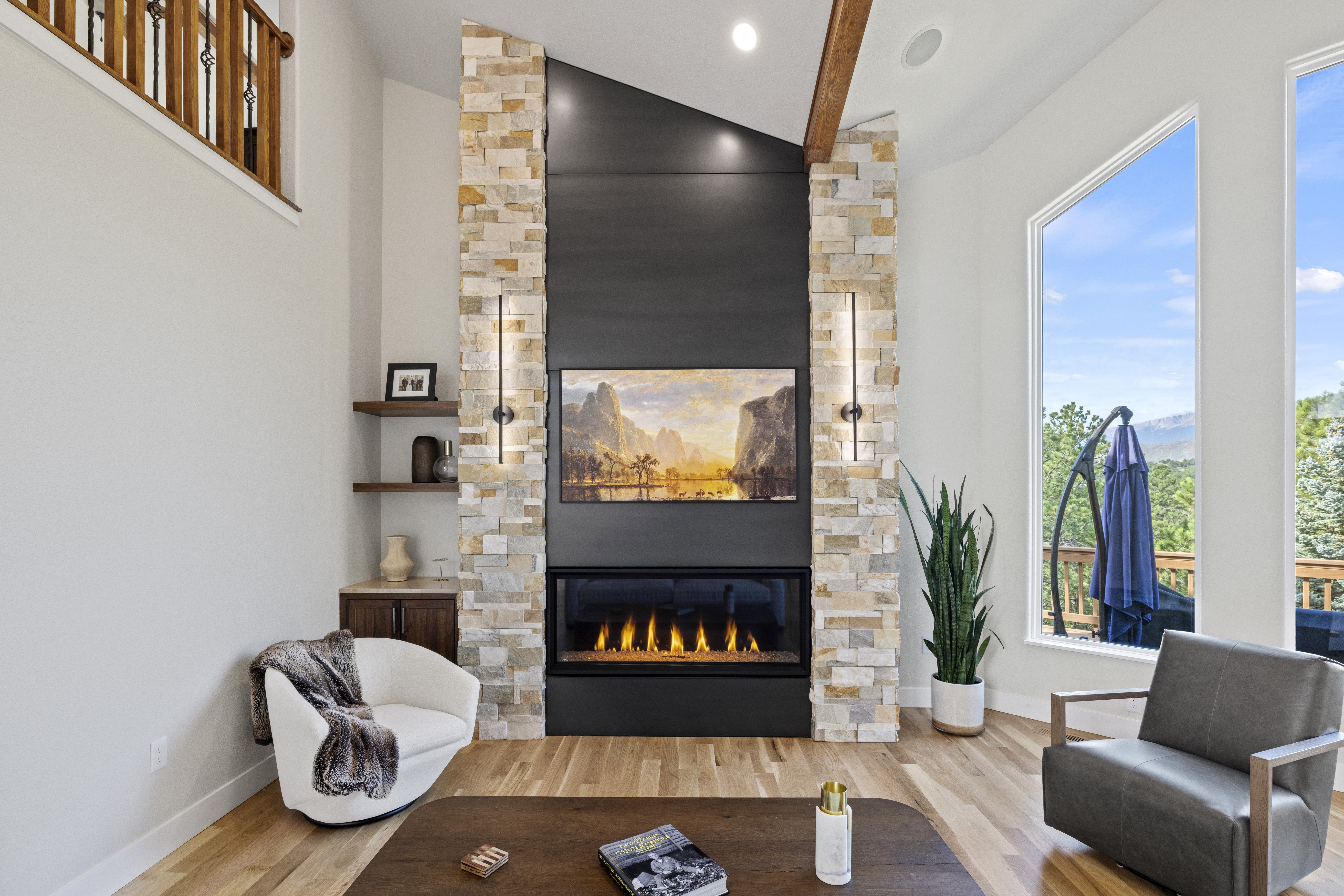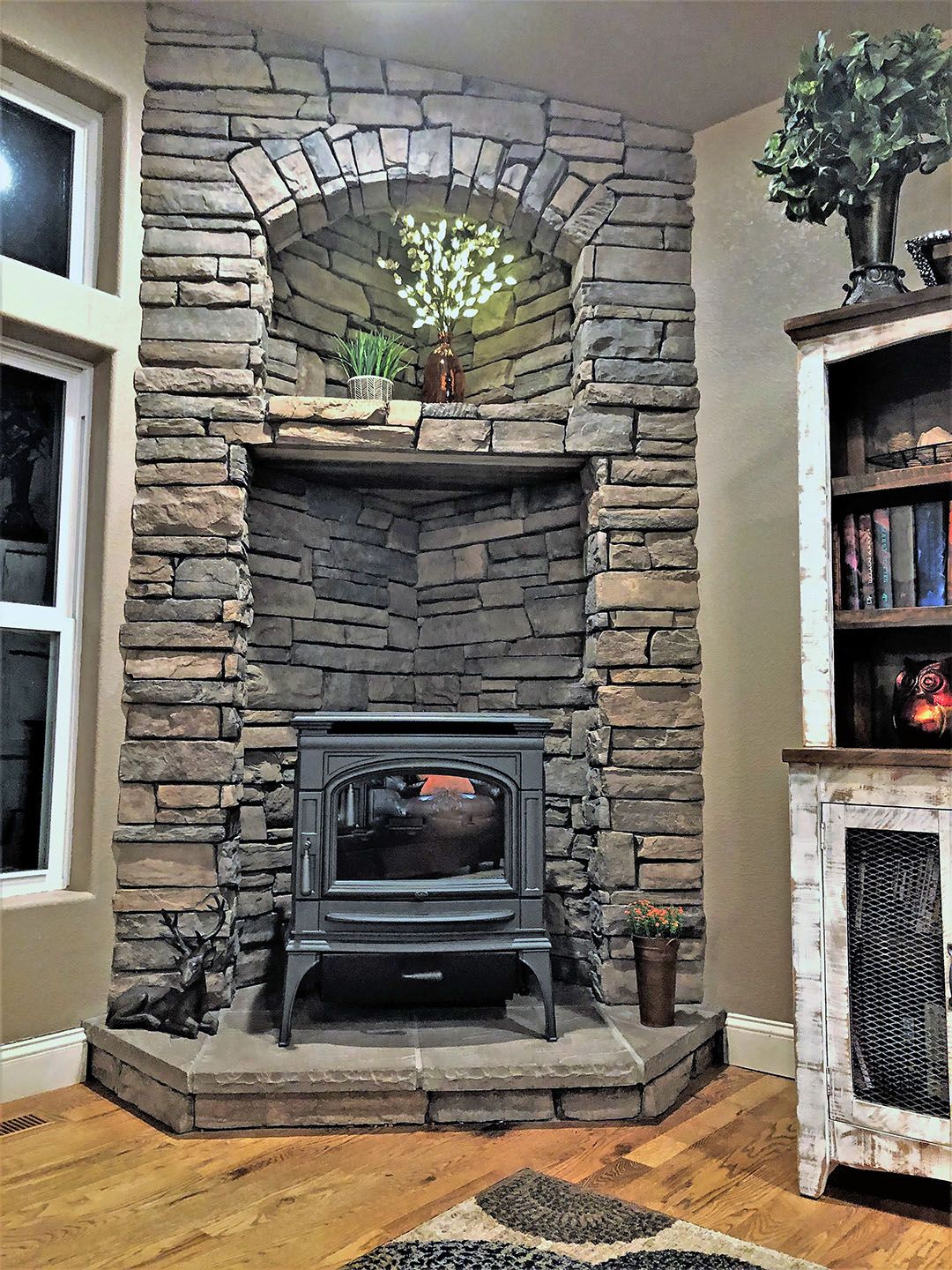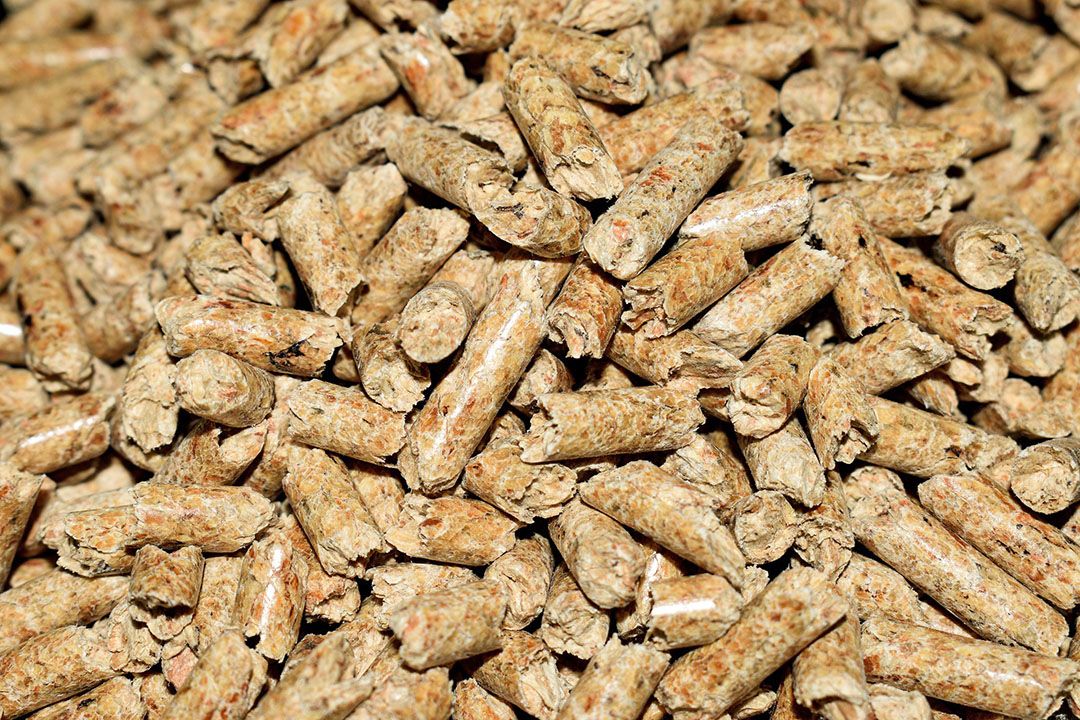
Choosing a Pellet Stove: An Efficient and Green Heating Solution

A rundown of important information before you purchase a pellet stove.
Pellet stoves have risen in popularity in recent years due to their ease of use and green-burning renewable resources. Pellet stoves are highly efficient at producing heat, don’t require chopping or storing wood, produce low emissions with catalytic converter models, and burn renewable wood by-products. In this article we’ll explain how pellet stoves operate, some of the advantages and disadvantages, along with some insight to help you determine if this type of fireplace is a good choice for your home.
What Are Pellets?
Pellets are the source of fuel that pellet stoves burn to create heat. Pellets are very dense, highly compressed bits of wood, sawdust, wood chippings, paper, and bark – basically all of the usable by-products produced from paper and sawmills. Pellets are roughly the size and shape of horse pills – cylindric shaped, tiny bits of compressed wood that come in large bags.
There are two types of pellet stoves:
- Pellet stoves that only accept wood-based pellets.
- Pellet stoves that accept a wide variety of biofuel pellets. Not only does that include wood-based pellets described above, but also compressed corn, nutshell, and other organic material by-products.
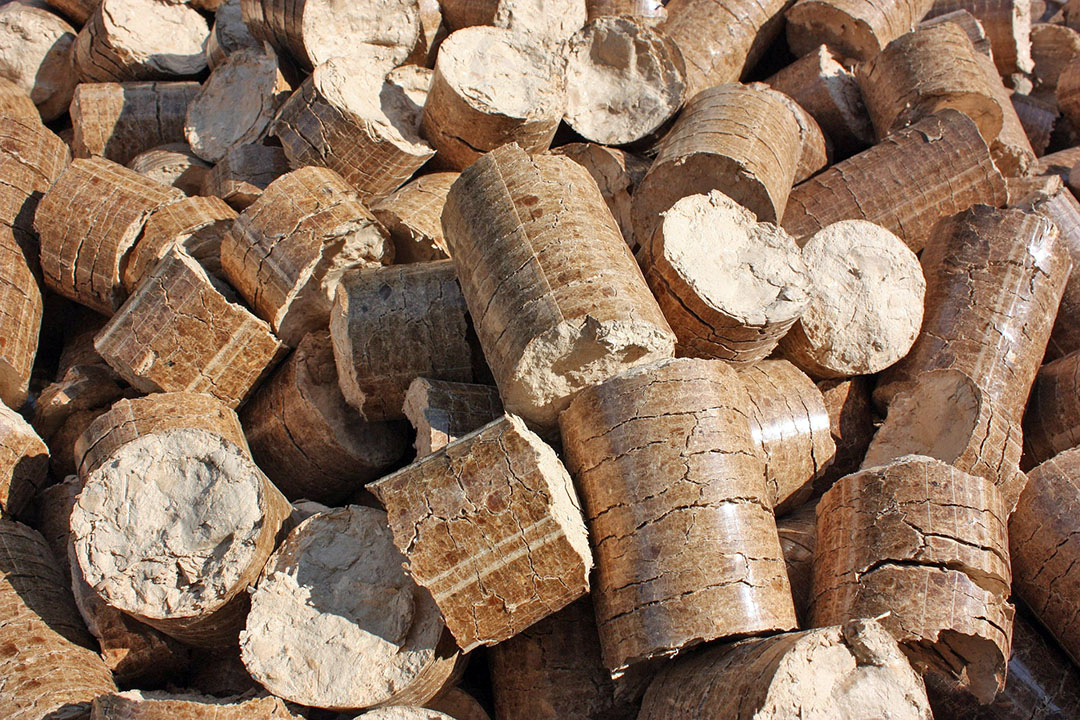
Grade of Pellets
Pellets come in many different grades and burning options. Some pellets are more suitable for grills and smokers, making an effort to flavor meat with their woodsmoke. These are not a good choice for pellet stoves as they tend to produce more smoke and ash, and may not burn as hot or efficiently.
Generally, the more expensive the pellet, the more efficient it will burn. High grade pellets tend to be much more tightly compressed, burn cleaner, burn hotter, and produce much less ash. This means that your stove will much more efficiently produce heat, and that you’ll be cleaning and maintaining it less often.
Before purchasing a pellet stove, you must understand what kind of pellets you’ll be using, along with where you can buy these pellets. You will be dependent on purchasing pellets for the stove to operate.
Pellet Stoves Only Burn Pellets
It’s important to note that pellet stoves can only operate when they have proper pellets to burn. You cannot put chopped wood into a pellet stove. Likewise, pellet stoves cannot burn natural gas or propane. You are committed to burning pellets, and pellets only.
As we’ll learn, pellets are incredibly more efficient than burning chopped wood. However, you will be required to purchase and store pellets in order to generate heat. Should your local store run out of pellets, you will not be able to use your stove. This is the most obvious disadvantage for those preparing for the zombie apocalypse.
Storing Pellets
Like traditional wood-burning stoves and fireplaces, you will have to store pellets just as you would have to store wood. Usually, the space needed for storing pellets is much less, as you can fit many more pellets into a smaller space. However, it’s very important to store your pellets in a dry space protected from the weather. Moisture leads to inefficient burns and can compromise the structural integrity of the compressed pellet, leading your pellets to crumble and become unusable.
Pellets can be bought from most hardware stores and major retailers and come in 40 pound bags. You can also order pellets by the ton and have them delivered to your home.
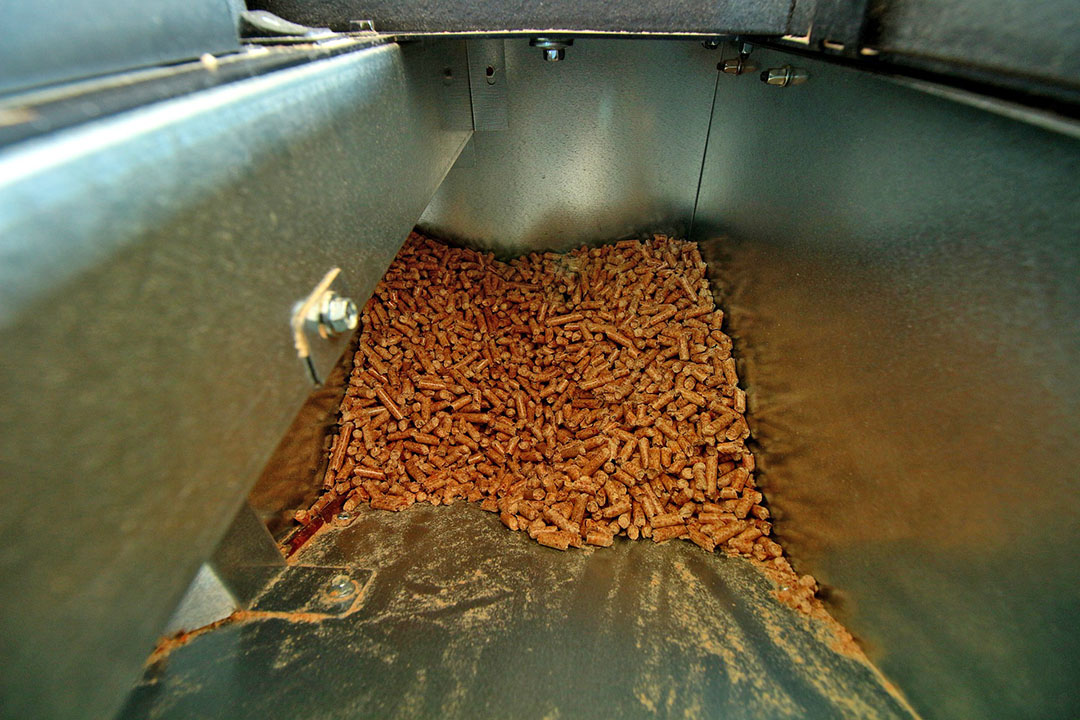
Efficiency
Because pellets are so tightly compressed, they become very dense little nuggets. These dense pellets burn extremely hot and clean compared to traditional woodstoves and fireplaces. This incredibly hot burn keeps smoke and ash to a minimum, and therefore produces much less creosote. This is an important safety feature, creosote being the cause of many house fires, and a low-maintenance feature.
Pellet stoves with an EPA rating are at least 83% efficient, which surpasses most traditional wood-burners and is on par with gas fireplaces. Pellet stoves require much less fuel than traditional wood-burners and produce much more heat, making them more efficient.
Heat Output
Different models of pellet stoves generally produce anywhere from 8,000 to 90,000 BTU’s. For reference, a 40,000 BTU pellet stove is rated to heat a 2,000 square foot home. Generally, pellet stoves increase in price in comparison to the amount of BTU’s they can generate. Simply calculate the square footage you need to heat in order to determine the correct size of pellet stove. This isn’t one of those “go big or go home” moments – simply buy the size adequate for the space. Using a larger pellet stove on its lowest setting all of the time may eventually cause problems and inefficient burns.
How Are Pellet Stoves A “Green” Option?
Essentially, pellet stoves are considered “green” because they burn by-products of renewable resources. Pellets are created from lumber products traditionally discarded. Repurposing these leftover materials is an efficient way to use all of the tree processed by a sawmill. Further, trees are renewable. Unlike natural gas or propane, tree farms can be continually be cut and replanted, whereas gas is not renewable.
But what about the emissions? Surely burning wood by-products releases carbon into the atmosphere? Yes, carbon is released. However, new pellet stoves equipped with catalytic converts (similar to the device on your car) captures the vast majority of smoke particles and burns them off at an incredibly high temperature. This leads to a very clean burn, or par or better than natural gas, and produces much more heat for your home. So, you’re burning recycled / repurposed renewable resources, and doing it with very little emissions – that is why pellet stoves are considered “green”.
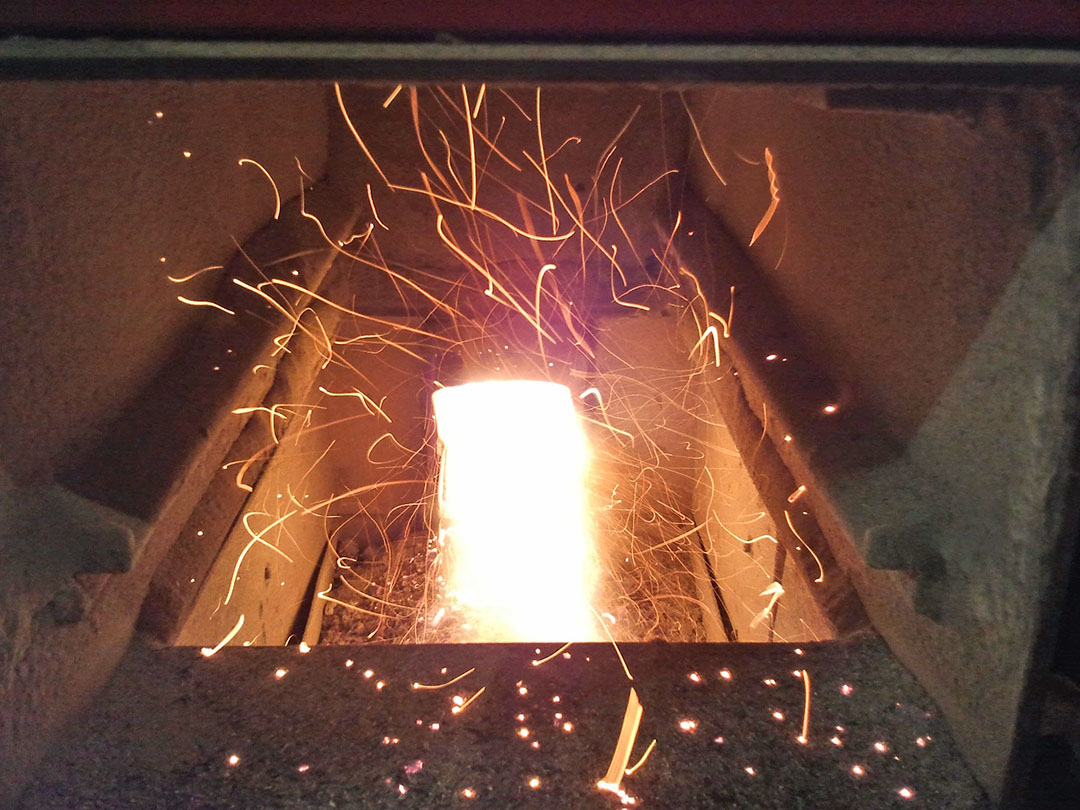
Nuts and Bolts
Pellet stoves require electricity to operate. Power is needed to ignite the stove, as well as operate the motor that dispenses the appropriate amount of pellets to regulate temperature. The damper, or airflow, is also electronically regulated to provide the most efficient burn. Likewise, pellet stoves must also be vented.
The flame within pellet stoves is real, but less viewable than traditional fireplaces or wood-burning stoves. Pellet stoves provide less ambiance or atmosphere, but are much more efficient. Pellet stoves can also be a little noisy, depending on the quality of the motor that dispenses pellet, sometimes you can hear this device. Also, as the pellets drop into the combustion chamber, they can make a “ping” or “tinging” noise.
Who Are Pellet Stoves For?
In many ways, we view pellet stoves as direct competitors normal furnaces or gas fireplaces, more so than a competitor to traditional wood-burners. Pellet stoves are an environmentally friendly, renewable resourced burning solution with efficiency rating on par or above gas fireplaces. For this green benefit, pellet stoves require a little more maintenance than gas fireplaces – occasionally cleaning out ash – and require the storage of pellets.
However, because pellet stoves require purchasing pellets from the supply chain – you cannot make your own pellets – and because pellet stoves require electricity to operate, they are not the best solution for off-grid living or as a “back up” heating source. Should there be a “grid down” situation, you may have difficulty sourcing pellets or providing electricity for the stove to operate.

Conclusion
Pellet stoves give you heat at an incredibly efficient and green rate. That is what they are good at doing. They are not good at providing all of the aesthetics associated with traditional fireplaces, wood-burning stoves, or even gas fireplaces. They do possess their own comforting je ne sais quoi, but the experience shouldn’t be conflated. Pellet stoves can work well as a primary heating source or adding additional warmth to family room, but aren’t as good at filling a role as a reliable backup heating source. To learn more about pellet stoves or compare them to other options on the market, contact one of our Project Managers. We’d love to discuss options and help you choose the best stove for your home.

